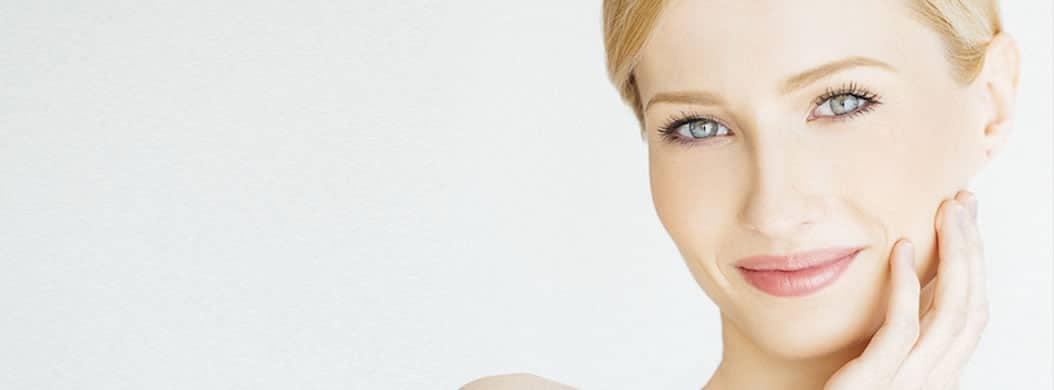

The revision rate for patients after a rhinoplasty may be as high as 20 percent or one in five patients. Patients who inquire about secondary rhinoplasty or revision rhinoplasty are unhappy with the aesthetic and/or functional results of their primary procedure. Unsatisfactory results may occur as a result of a complicated nasal condition or shape, incomplete or overcorrection by the surgeon, or simply due to the patient’s healing pattern.
Revision rhinoplasty, also known as secondary rhinoplasty, is a complicated procedure that is most successfully performed by a rhinoplasty specialist to reshape or resize the nose after an initial procedure. Dr. Trussler has advanced training and significant experience correcting the aesthetic and functional problems seen in secondary rhinoplasty patient.
What Are My Rhinoplasty Options?
Some of the problems patients complain of after their initial rhinoplasty or septoplasty procedure include:
- Pinched nostril tip
- Pulled up nostrils
- Creases around the nostrils
- Scooped out profile
- Crooked nose
- Breathing difficulties
These problems can range from minor imperfections to severe deformities. Dr. Trussler strives to help patients achieve the highest level of satisfaction from their revision rhinoplasty and will do his best to correct their individual problems.
Considerations
Anyone who is unhappy with the results of their initial rhinoplasty procedure may be a candidate for revision rhinoplasty. Dr. Trussler encourages patients to discuss their initial procedure with either their original surgeon first to see if correction is within the abilities of the primary surgeon. If the patient would like a second opinion, the operative report from the primary rhinoplasty can be helpful. Dr. Trussler will spend a significant amount of time to determine the new goals for the revision rhinoplasty. It is also important for patients to be both emotionally and financially prepared for additional surgery.
Dr. Trussler will determine whether or not revision surgery is a possibility for you after discussing your goals for surgery and performing a thorough nasal and facial examination.
Expectations
In most cases, it is recommended to wait at least one year after the initial procedure before undergoing revision rhinoplasty, as full healing should be complete in order to make an educated decision on the need for revision, as well as allowing the healing tissues of the nose to soften so that a successful surgery can be performed.
Surgery
The revision rhinoplasty or secondary rhinoplasty procedure is usually performed on an outpatient basis under general anesthesia to help reduce any potential discomfort. Revision rhinoplasty is usually performed using an open technique, allowing for greater visualization of the nasal anatomy and improved control over separating the scarred nasal tissue.
In cases where reshaping is needed, a cartilage graft from the nasal septum, ear or rib is commonly required. Injectable fillers may also be used to correct small defects after the initial procedure, although the use of the patient’s own cartilage is preferred. The entire procedure usually takes two and a half to four hours to perform. Dr. Trussler may recommend that the secondary rhinoplasty patient that requires a rib cartilage graft stay overnight for close monitoring and pain control.
Revision Rhinoplasty Recovery
After the revision rhinoplasty procedure, patients will usually experience bruising and swelling for five to seven days. Discomfort may be less than the primary procedure because of the fact that the nose has already been operated on. Dr. Trussler will place tape and a splint on the nose, as well as silicone splints in the nose. Everything, including stitches, will be removed after one week of healing. Once bruising and swelling subside, patients can usually return to work and other regular activities. The nose will continue to heal and may change in appearance over the course of a year after surgery when full results will be visible.
Initial results of the revision procedure will be noticeable right away but will continue to improve as swelling subsides and the nose heals. It is important for patients to wait until full results appear before comparing their pre-operative and post-operative result.
Publication
- Janis JE, Trussler AP, Ghavami A, Marin V, Rohrich RJ, Gunter JP. The Lower Lateral Crural Turnover Flap. Plast Reconstr Surg. 2009 Jun;123(6):1830-41.

Whether you have a question about revision rhinoplasty or would like to set up a consultation in Austin, Dr. Trussler, and his staff are here to help. Please fill out our contact form, or call our Austin office at 512-450-1077 to schedule an appointment. Start your journey to not only looking but breathing better today!
